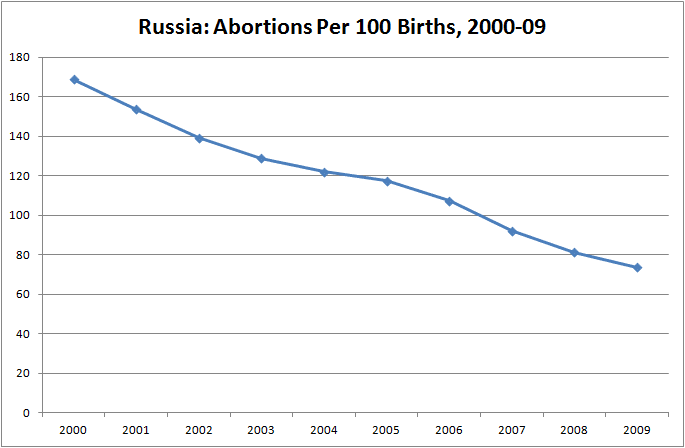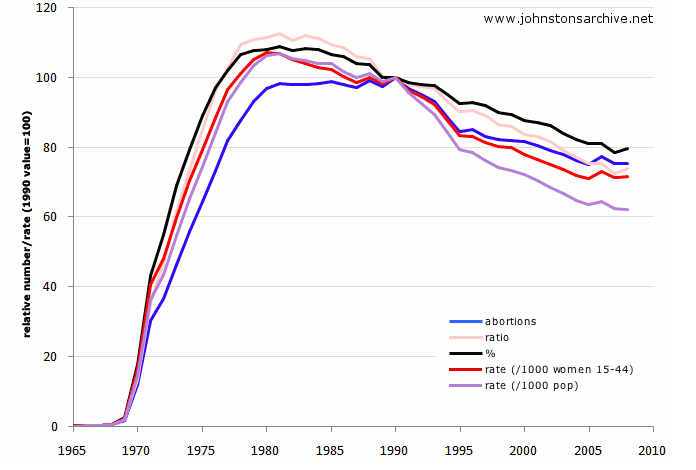The Holy Internet demands writers present the truth in 500 words or less, with a picture for every 100 words. But when considering Libby Anne’s recent claim — that if pro-lifers were really interested in saving the lives of unborn children, they would promote the use of contraception — I’m afraid I cannot abide by such a limit. Allow me to reduce my pageviews by 75% and say it: The reality of the contraception/abortion link is not conducive to short posts. We will march like the dead through the marshes of peer-reviewed studies, and will come out having discovered one of the most dangerous, most suppressed truths in existence. So please:
Libby Anne’s argument is brief, but poignant:
But if banning abortion does not decrease abortion rates, what does? Why do some countries have low abortion rates while others have much higher rates? The answer, I found, was simple.
Both the lowest and highest subregional abortion rates are in Europe, where abortion is generally legal under broad grounds. In Western Europe, the rate is 12 per 1,000 women, while in Eastern Europe it is 43. The discrepancy in rates between the two regions reflects relatively low contraceptive use in Eastern Europe, as well as a high degree of reliance on methods with relatively high user failure rates, such as the condom, withdrawal and the rhythm method.
As I sat there in the student union reading over my lunch, I found that making birth control widespread and easily accessible is actually the most effective way to decrease the abortion rate.
It goes like this: Lots of contraception in Western Europe: Low abortion rate. Less contraception in Eastern Europe: High abortion rate. Contraception lowers the abortion rate.
I’d love to leave it at that, but if life were so simple we wouldn’t have existential angst. So let’s take another look.
Abortion Culture
Eastern Europe has what is referred to in academia as an “abortion culture”. In the Soviet Union (roughly the same area we now refer to as Eastern Europe) abortion for any reason was legalized by Stalin in 1920, long before it was legalized anywhere else. It was banned in 1936 in an effort to increase population growth, then re-legalized in 1955.

In his 2002 article published in Studies in Family Planning, Victor Agadjanian makes the point that in the Soviet Union “soon after it was re-legalized in 1955, abortion became the main form of birth control, available on request and free of charge…Little ideological or moral opposition to abortion existed.” This cannot be said of the vast majority of countries, and certainly not of Western Europe.
The difference in both area’s legalizations of abortion is crucial. The vast majority of Eastern Europe had legalized abortion before modern contraception. The vast majority of Western Europe had legalized abortion after modern contraception, between 1973-1980. The problem with claiming that Eastern Europe’s high abortion rate is caused by a lack of contraceptive methods is this: Eastern Europe used and does use abortion as its primary method of family planning.
As the study “Family Planning and Induced Abortion in Post-Soviet Russia of the Early 1990s: Unmet Needs in Information Supply” indicates of Russia:
Induced abortion remains possibly the most common and effective means of family planning in Russia. Russian society and the public health system have adapted to the provision of induced abortion as the primary method of family planning. Therefore, Russia can be defined as having a stable abortion culture. Induced abortion is still the primary and often the only method of reducing fertility in many regions.
And as the Agadjanian study confirms:
Despite the decline in the use of abortion, the procedure has remained a well-entrenched part of local reproductive culture and practices largely because of the inertia of the Soviet tradition of unlimited reliance on abortion and because of the insufficient supply and high cost of contraceptives. Also, as anecdotal evidence suggests, gynecologists in Kazakhstan are often reluctant to encourage contraceptive use because the charges that they exact (even if illegally) for abortion services constitute an important part of their incomes.
Eastern Europe’s high abortion rate is not merely the result of their lack of contraception. Eastern Europe’s high abortion rate is largely a result of their “abortion culture”, a culture in which little opposition to abortion exists, and in which abortion is engrained as the primary method of family planning. For the Guttmacher institute (and yes, Anne’s source is the same Guttmacher factsheet) to compare the two regions without any mention of their vastly different historical and cultural take on abortion is unexamined babble at best. But Planned Parenthood isn’t donating millions of dollars to their old research arm to tell the truth, and certainly not to take confounding factors into account. God forbid.
So, given that the evidence she uses is faulty, Libby Anne’s claim is moot. If that’s all you wanted know, cease reading. But there’s more to this question of whether contraception reduces abortion rates, and I will address it now.
Decreasing Abortion Rates in Eastern Europe
Though the direct comparison of Eastern and Western Europe is a silly one, there are countries in which the introduction of modern contraception has lead to a decrease in abortions. The Agadjanian study refers to the fact that, while the abortion culture still exists, and while the Eastern abortion rate is still incredibly high, abortion rates have been declining in recent years, associated with a higher use of contraception.
And he’s not alone. The Guttmacher review “Relationships Between Contraception and Abortion: A Review of the Evidence” looked at the abortion rates in several countries after the introduction of modern contraception, and determined that contraception reduces abortion rates, and in countries where it doesn’t, “after fertility levels stabilized…contraceptive use continued to increase and abortion rates fell.” This implies that contraception will eventually reduce the abortion rate in those countries as well.
Ignoring other possible factors involved in the decrease, such as government incentives for birth, here’s the problem: 4 of the 7 countries the The Guttmacher Institute cites to make the claim that contraception reduces overall abortion rates are ex-Soviet countries: Kazakhstan, Kyrgyz Republic, Uzbekistan, and Bulgaria. If you understood why it was illogical to directly compare the abortion rates of Eastern and Western Europe, you’ll understand why it is likewise illogical to use ex-Soviet countries to make the blanket statement that “contraception reduces the abortion rate.”
As we’ve already determined, abortion is used as the primary method of family planning in countries like Kazakhstan. To give contraception to a country that relies exclusively on abortion to family plan will reduce the abortion rate insofar as that country is offered another method of family planning. This is not true of the majority of the world. (Remember, most countries legalized contraception before they legalized abortion. Most countries did not have an abortion culture that viewed abortion as the primary method of family planning when contraception was introduced.)
So the previously bold statement that “contraception reduces abortion rates” must be reconfigured to reflect the truth. Contraception reduces abortion rates primarily in regions that already use abortion as a primary method of family planning, and thus already have extremely high abortion rates. Contraception does not get rid of the abortion culture. Indeed, the countries Guttmacher cites still have some of the highest abortion rates in the world. (And, as they now undergo the double hit of contraception and abortion, as well as emigration, they are undergoing crippling population decline, as pointed out by the Time article Nobody Home: The Countries Where Population is on the Decline.)
We should be suspicious when an institution like the Guttmacher Institute uses abortion cultures to claim that contraception reduces abortion rates, as these represent a minority. What about countries that aren’t?
Non-abortion-culture Countries
An honest look at the data shows that in virtually every country that increased the use of contraception, there was a simultaneous increase in that country’s abortion rate. In England (Rise in contraceptive use: simultaneous rise in abortions), France (Rise in contraceptive use: simultaneous rise in abortions), Australia, (Rise in contraceptive use: simultaneous rise in abortions), Portugal (Whose abortion rate only began to rise after 1999, after oral contraceptive methods were made widely available), Canada (Whose abortion rate only began to rise after the legalization of oral contraceptives in 1969), and, as the Guttmacher Institute shows, Singapore, Cuba, Denmark, the Netherlands, and South Korea, to name a few.
And of course, we saw this rise in the land of the free and home of the brave. Contraceptive devices gained popularity throughout the 1900’s, and were “legalized” in 1965. The widespread proliferation of contraceptive devices followed. The abortion rate began to creep up at this same time, after 1965, from 0.02 abortions per 1,000 women ages 15-44 in 1965 to 16.33 in 1973, when abortion was legalized.
Now before the inevitable screams of “correlation does not equal causation!” commence, let’s dive a little deeper. It is true that correlation is not causation, but what many of the Internet-trained forget — myself included — is the obvious truth that correlation does not rule out causation. In fact, if there is strong correlation and a logical reason for causation, correlation does imply some degree of causation, though there may be many other factors involved. So is there a logical reason for the increased use of contraceptives to be correlated with the increased abortion rate between 1965 and 1973?
Yes. As Guttmacher researcher Stanley Henshaw noted in his review “Unintended Pregnancy in the United States“, “contraceptive users appear to have been more motivated to prevent births than were nonusers”. The CDC has consistently reported that the majority of abortions are performed on women who were using contraception at the time of their last menstrual cycle, that is, at the time they conceived. If contraceptive users are more motivated to have abortions than non-contraceptive users, then it is not ridiculous to posit that the increased use of contraception in the USA was a major factor in the simultaneous increase in abortions.
This seems like common sense to me. The use of contraception is the attempt to have sex while avoiding having children. To conceive a child despite using contraception means that that attempt has failed. If the attempt fails, then that newly created human life naturally represents a failure. The contraceptive mentality — a mentality I believe can exist whether or not one uses specifically uses contraceptive devices while having sex — carries over into pregnancy. If I want to avoid a child while having sex, chances are I will want to avoid a child when my partner becomes pregnant. This is not to say that all couples who use contraception will always abort. Of course not! This is merely to say that the contraceptive mentality leads to a temptation to abortion, and where there is temptation there is failure, and where there is failure, the stats reflect it.
It is, after all, because of contraception that abortion remains legal in this country. In the Supreme Court case Planned Parenthood vs. Casey, which confirmed the legalization of abortion, it was stated that:
[I]n some critical respects, the abortion decision is of the same character as the decision to use contraception[…]For two decades of economic and social developments, [people] have organized intimate relationships and made choices that define their views of themselves and their places in society, in reliance on the availability of abortion in the event that contraception should fail.
Here’s what important to consider when looking at countries without an abortion culture. While the increased availability and use of contraception may contribute to decreases in the abortion rate from time to time — as I believe it has — to take these events and claim that “contraception reduces abortion rates” is painfully optimistic, and utterly misses the overall picture. It is no victory for contraception if it partially reduces a problem it has created in the first place. If the establishment of a contraceptive mentality did indeed lead to a need for abortion, and thus an overall increase in abortion, then we can only laud contraception for decreasing abortion rates if it brings abortion rates back to where they were before the widespread use of contraception.
The Guttmacher Institute claims that in non abortion-culture countries, “after fertility levels stabilized…contraceptive use continued to increase and abortion rates fell.” They do not mention that these abortion rates fell and stabilized at rate far higher than the abortion rate before the introduction of contraception.
(Funnily enough, this was seen in Turkey, one of the three countries the Guttmacher Institute cites to support their claims that weren’t Kazakhstan, Kyrgyz Republic, Uzbekistan, and Bulgaria. In the study The Role of Contraceptive Changes in the Decline of Induced Abortion in Turkey – which Guttmacher cites – it is shown that in 1983, when contraception laws were first liberalized, abortion ended 12.1% of all pregnancies. As contraceptive used increased, the abortion rate increased, until 1988, when abortion ended 23.6% of pregnancies. Thanks to the improved use and availability of contraception, the rate then began to decrease, until, by 1998, abortion ended 15.7% of all pregnancies. Here the abortion rate dipped, rose, and leveled, and by 2007, abortion ended 17.0% of all pregnancies in Turkey, representing an overall increase in abortion.)
Allow me to summarize: Contraception has been shown to decrease abortion rates primarily in countries with already high abortion rates. These represent a minority of countries. Contraception has been shown to increase abortion rates primarily in countries with already low abortion rates. These represent a majority of countries. Contraception has been shown to slightly reduce abortion rates after its initial increase of abortion rates, but has never been shown to reduce abortion rates back to pre-contraception levels. This is my claim. I have no doubt that there’s a lot more to say, given the incredible amount of studies I haven’t seen. But as far as I can tell, this is a claim far closer to the truth than the oft-repeated, always unexamined “Contraception reduces abortion rates”.
I don’t like thinking contraception hasn’t helped our world — it’s quite possibly the most unpopular conclusion a modern man can come to. I understand that Libby Anne ditched the pro-life movement over the issue of contraception, I really do. But if our goal is to end the destruction of human life that is abortion, we cannot advocate the use of contraception. We must advocate something far better, that is, the practice of effective, natural methods of family planning that embrace fertility instead of suppressing it, and work against the contraceptive mentality. We’ll have to appreciate sex as powerful, life-changing, and awesome, and develop within ourselves love for the child, not a constant rejection. If we want to lower abortion rates, we cannot rely on artificial technologies forever failing us. We need love.
If you’re still here, you’re a hero. Good job.














